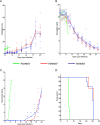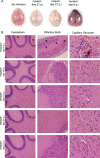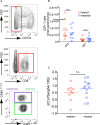Testing the impact of a single nucleotide polymorphism in a Plasmodium berghei ApiAP2 transcription factor on experimental cerebral malaria in mice
- PMID: 32788672
- PMCID: PMC7424516
- DOI: 10.1038/s41598-020-70617-7
Testing the impact of a single nucleotide polymorphism in a Plasmodium berghei ApiAP2 transcription factor on experimental cerebral malaria in mice
Abstract
Cerebral malaria (CM) is the deadliest form of severe Plasmodium infections. Currently, we have limited understanding of the mechanisms by which Plasmodium parasites induce CM. The mouse model of CM, experimental CM (ECM), induced by infection with the rodent parasite, Plasmodium berghei ANKA (PbANKA) has been extensively used to study the pathophysiology of CM. Recent genomic analyses revealed that the coding regions of PbANKA and the closely related Plasmodium berghei NK65 (PbNK65), that does not cause ECM, differ in only 21 single nucleotide polymorphysims (SNPs). Thus, the SNP-containing genes might contribute to the pathogenesis of ECM. Although the majority of these SNPs are located in genes of unknown function, one SNP is located in the DNA binding site of a member of the Plasmodium ApiAP2 transcription factor family, that we recently showed functions as a virulence factor alternating the host's immune response to the parasite. Here, we investigated the impact of this SNP on the development of ECM. Our results using CRISPR-Cas9 engineered parasites indicate that despite its immune modulatory function, the SNP is neither necessary nor sufficient to induce ECM and thus cannot account for parasite strain-specific differences in ECM phenotypes.
Conflict of interest statement
The authors declare no competing interests.
Figures




References
-
- WHO. World Malaria Report 2016. (WHO, Geneva, 2016).
-
- WHO. WHO World Malaria Report. Report No. ISBN 978 92 4 156552 3 (2017).
Publication types
MeSH terms
Substances
LinkOut - more resources
Full Text Sources

